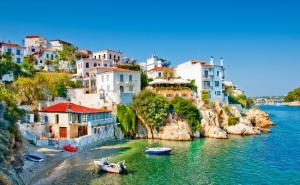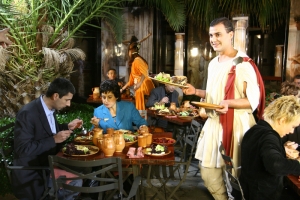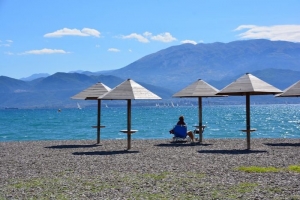When most people think of summer in Greece, the images are predictable: sunbathing on white-sand beaches, sipping ouzo at seaside tavernas, watching the sun melt into the sea. And while those are undeniably part of the magic, there’s another Greece waiting to be discovered.
This is a Greece of hidden waterfalls, sea caves, open-air cinemas, and ancient paths under starry skies. Ready to go off-script?
Here are 10 unique summer experiences in Greece that will transform your idea of what summer can be.
1. Kayak Through the Sea Caves of Milos

@eirini__30
Milos is volcanic, wild, and full of hidden coves and surreal sea caves, and the best way to explore them? By kayak. Paddle through tunnels of white rock, swim in translucent water, and land on beaches that are inaccessible by road.
🛶
Best Spot: The caves around
Kleftiko and
Sykia on the southern coast.
2. Chase Waterfalls in Northern Evia or Pelion

@analytis.mp3
Greece is more than islands; it’s full of lush gorges and waterfalls. Cool off in natural rock pools shaded by plane trees, just a few hours from Athens.
Try: The waterfalls of Drymonas in Evia or Tsagarada’s Fakistra Waterfall in Pelion. Ideal for a day trip with a picnic.
3. Watch a Film Under the Stars at a Greek Open-Air Cinema

@yuksel_pecenek
It’s not just a movie; it’s a ritual. With a breeze in your hair, jasmine scent in the air, and a cold drink in hand, Greece’s θερινά σινεμά (summer cinemas) are pure nostalgia.
Where to go: Cine Thisio in Athens, with the Acropolis glowing behind the screen, or Cine Kalisperitis in Kimolos.
4. Learn Pottery in Sifnos, the Island of Clay

@mrchrissharples
Sifnos is a hub of ceramic art. Sign up for a pottery workshop with a local artist, and get your hands into the same clay that’s been shaped for centuries.
🏺 Best studios: Atsonios or Peristeriona in Kamares.
5. Spend the Night in a Treehouse in Evritania

@dimvsd
Karpenisi in summer, transforms into a green paradise, filled with rivers, forests, and cool mountain air. One of the most magical ways to experience it? Sleeping in a treehouse nestled among fir trees.
Surrounded by nature, you can swing in a hammock, wake up to birdsong, and fall asleep under the stars. It’s the kind of stay that makes you feel like a kid again, whether you're with family, your partner, or on a solo recharge.
6. Spend the Night in a Monastery on a Remote Island

@jcamatsos
If you're craving silence, introspection, or just a break from modern chaos, spend a night (or two) in a working Greek monastery. Many are open to respectful visitors in the summer months, offering basic lodging, shared meals, and early-morning liturgies.
It’s not about religion but about stillness, starlit courtyards, stone cells cooled by mountain air, and waking to the sound of chanting echoing through the hills.



















